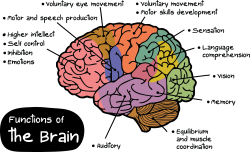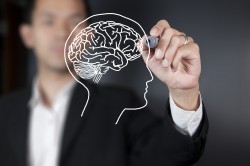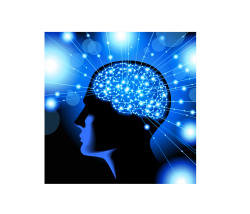Stroke or Traumatic Brain Injury
Can Neurofeedback Help a Past Stroke or Traumatic Brain Injury (TBI)?
Traditionally, there have been few formal rehabilitation options for people who have suffered a stroke or traumatic brain injury (TBI) more than two years in the past. Experts believed any progress made would be made within those first two years. Sometimes additional physical, speech, or occupational therapy may be offered, but no major progress has usually been expected at that point.
Neurofeedback therapy can bring about dramatic improvements, well beyond the two-year mark.
 Neurofeedback is becoming more recognized as a treatment modality that can help the brain repair itself, eve years after damage has been done.
Neurofeedback is becoming more recognized as a treatment modality that can help the brain repair itself, eve years after damage has been done.
For example, a therapist shared a situation in which a patient showed significant improvement three years after suffering a stroke. The patient’s left hand had been constantly and completely clenched since the stroke occurred. After her tenth neurofeedback training session, she began to open and use her hand.
How did neurofeedback help bring about that change? The therapist targeted the neurofeedback training near the brain’s motor strip – an area involved in controlling muscles and muscle tone. Through neurofeedback training, those motor circuits possibly reorganized and became more efficient. In this case, it was successful and enabled the client to regain motor function in her hand.
Why Is Neurofeedback Effective for Stroke and Traumatic Brain Injury?
 Stroke and TBI involve injuries to the brain. To treat those injuries, the brain itself must be targeted. Brain training is completely individualized, and the specific areas of the brain affected by the stroke or TBI are targeted during neurofeedback therapy. In the case of stroke and TBI, a neurofeedback practitioner will generally use a qEEG brain map to determine which areas should be targeted for best results.
Stroke and TBI involve injuries to the brain. To treat those injuries, the brain itself must be targeted. Brain training is completely individualized, and the specific areas of the brain affected by the stroke or TBI are targeted during neurofeedback therapy. In the case of stroke and TBI, a neurofeedback practitioner will generally use a qEEG brain map to determine which areas should be targeted for best results.
What Damage from Stroke or TBI Can Be Helped with Neurofeedback?
A number of damage experienced in a stroke or TBI can be helped with neurofeedback. Neurofeedback helps connectivity and timing in the brain, and specific areas of the brain can be targeted to have the most impact. Some common repercussions of stroke and TBI that can be helped are:
- Speech
- Movement
- Mood regulation
- Better behavior control
- Headache reduction
Neurofeedback works extremely well for these because the brain regulates each of those issues.
For people recovering from stroke and TBI, neurofeedback training can be particularly helpful in improving speech. During brain training, the specific areas of the brain associated with speech can be targeted, strengthened, and improved. In fact, some neuropsychologists believe that neurofeedback is actually rehabilitating the damaged speech areas of the brain, rather than just compensating for the dysfunction.
A speech therapist specializing in stroke and TBI began neurofeedback training with her patients in the first hospital-based program to use neurofeedback training. When interviewed, the speech therapist reported more instances of progress in speech improvement for stroke and TBI patients in the one year since implementing neurofeedback training than in the whole previous ten years combined. She feels that training the brain increases success exponentially.
Recovery From Stroke or TBI Is Possible with Neurofeedback
 The extent of recovery possible after stroke or TBI depends on numerous factors. However, the experience of therapists and their patients has shown that many people improve significantly, even well after the incident, through neurofeedback brain training.
The extent of recovery possible after stroke or TBI depends on numerous factors. However, the experience of therapists and their patients has shown that many people improve significantly, even well after the incident, through neurofeedback brain training.
Neurofeedback is also an excellent method for treatment of Stroke and TBI because it is:
- Effective
- Non-invasive
- Painless
- Free of side effects
- Long-lasting with a sufficient amount of brain training
To learn more about how neurofeedback can help with the effects of a stroke or traumatic brain injury, please visit our Neurofeedback Provider List to see if we have a clinician listed near you.

